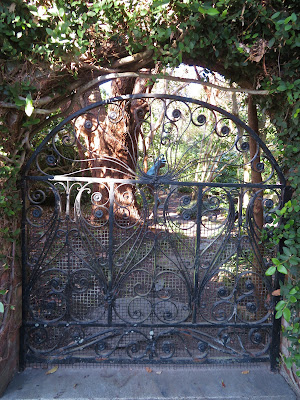 French is considered to be "le langage de l'amour." So, one may ask: What is it about French that qualifies it to be called "the language of love?" One reason, French is very euphonious. The tone of the spoken words tend to be more delicate sounding to the ears. Also, vowels and consonants are well distributed resulting in more harmonious phrases. Finally, the need to conjugate verbs makes it ideal for writing poetry and music.
French is considered to be "le langage de l'amour." So, one may ask: What is it about French that qualifies it to be called "the language of love?" One reason, French is very euphonious. The tone of the spoken words tend to be more delicate sounding to the ears. Also, vowels and consonants are well distributed resulting in more harmonious phrases. Finally, the need to conjugate verbs makes it ideal for writing poetry and music. Take for example, the French phrase "claire-voie." Attempting to pronounce the phrase in English, a person may be inclined to say it as if it were pronounced "clairevoyee," when actually the correct pronunciation, as if it were spoken in English would sound like "claire-vua" in proper French. You would have to agree, it is more "poétique."
I first came across the phrase "claire-voie" while researching the history of Charleston's wrought iron legacy for a recent article. It was listed along with such items as nails, boot scrapers, horseshoes, balconies, locks, and latches, which were used by colonial Charlestonians. To me, it seemed to be out of place.
When I looked up the translation of the phrase, I discovered it to mean "let the light through" or more literally an "openwork." A "claire-voie" is typically achieved with hedging or it can be an ironwork screen, openwork fence, gate, or grille placed in a wall through which a vista can be enjoyed. One of the most famous examples of a claire-voie is a round opening in a hedge of the White Garden at Sissinghurst Garden Castle in England.
I have strolled the wrought iron rich streets south of Broad Street many times and never realized the grated openings in residential walls allowing passersby a peek into the beautifully landscaped gardens beyond had a name. So, armed with my newly acquired information, I packed my camera and headed for the downtown peninsula of Charleston to search out examples of a claire-voie. I found them to be everywhere. This is a small collection I gathered on my excursion.
The French language is no stranger to Charleston. There has been a French influence in the city since its early colonial days. The Hugenots, French Protestants fleeing persecution and seeking religious freedom, came to Charleston in 1680 to start a community. The early congregation was made up of these Hugenot refugees sent by King Charles II to establish themselves as artisans and tradesmen. Within the original walled city, the district became known as the now famous French Quarter.
Preceded by two other churches, the still standing Gothic Revival-style French Huguenot Church, located at 136 Church Street, was completed in 1845. It was the first building of this style constructed in Charleston. Wealthy French merchants established a business presence and built homes. Legare Street is named for goldsmith Solomom Legare "the Hugenot," who built the first house at 32 Legare Street.
Like a surging Atlantic tide, peoples of varying cultures spilled into a river fed inlet of a distant new world and washed unto the shores of an oyster laden peninsula where they established what would grow into a bustling international sea port called Charleston. In this shared space, their varying beliefs and distinct dialects converged. They exchanged ideas and architecture. The French claire-voie was one of those shared concepts that found its way into the beautifully fashioned gardens of the elegant estates of America's most celebrated historic landscapes.






No comments:
Post a Comment